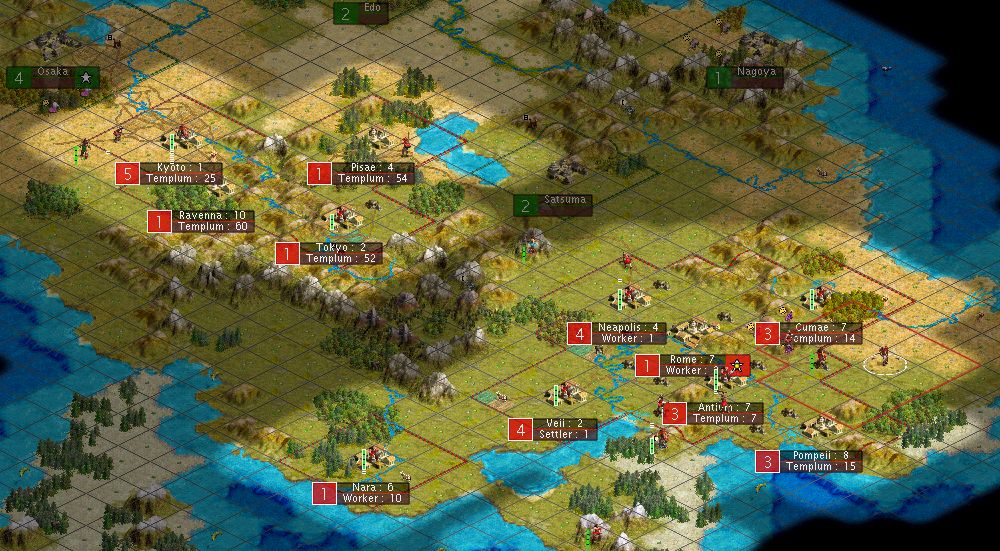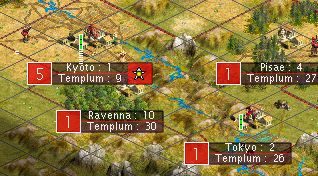DaveMcW
Deity
- Joined
- Oct 8, 2002
- Messages
- 6,489
When the capital city is razed or abandonned, each city in the empire scores
A neighbor city must yours, and within 8 tiles walking distance from the target city (a 17x17 square). The old capital does not count as a neighbor.
If there is a tie for the most points, the palace jumps to the first city in the database, which is usually the oldest city. After some old cities have been razed the database gets out of order and it's impossible to tell where the palace will go in a tie.
Edit: I multiplied all the points by 3 to make the formula easier to work with. Some of the discussions in this thread use the old numbers as fractions of 3.
- 3 points per national citizen
- 1 point per foreign citizen
- 1 point per neighboring town (1-6)
- 2 points per neighboring city (7-12)
- 3 points per neighboring metropolis (13+)
- 1 point per military unit
A neighbor city must yours, and within 8 tiles walking distance from the target city (a 17x17 square). The old capital does not count as a neighbor.
If there is a tie for the most points, the palace jumps to the first city in the database, which is usually the oldest city. After some old cities have been razed the database gets out of order and it's impossible to tell where the palace will go in a tie.
Edit: I multiplied all the points by 3 to make the formula easier to work with. Some of the discussions in this thread use the old numbers as fractions of 3.




